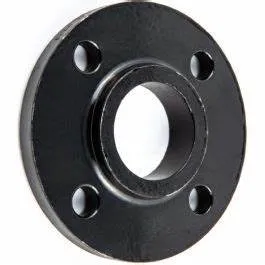-
Cangzhou Yulong Steel Co., Ltd.
-
Phone:
+86 13303177267 -
Email:
admin@ylsteelfittings.com
- English
- Arabic
- Italian
- Spanish
- Portuguese
- German
- kazakh
- Persian
- Greek
- French
- Russian
- Polish
- Thai
- Indonesian
- Vietnamese
- Zulu
- Korean
- Uzbek
- Hindi
- Serbian
- Malay
- Ukrainian
- Gujarati
- Haitian Creole
- hausa
- hawaiian
- Hebrew
- Miao
- Hungarian
- Icelandic
- igbo
- irish
- Japanese
- Javanese
- Kannada
- Khmer
- Rwandese
- Afrikaans
- Albanian
- Amharic
- Armenian
- Azerbaijani
- Basque
- Belarusian
- Bengali
- Bosnian
- Bulgarian
- Catalan
- Cebuano
- China
- China (Taiwan)
- Corsican
- Croatian
- Czech
- Danish
- Esperanto
- Estonian
- Finnish
- Frisian
- Galician
- Georgian
- Kurdish
- Kyrgyz
- Lao
- Latin
- Latvian
- Lithuanian
- Luxembourgish
- Macedonian
- Malgashi
- Malayalam
- Maltese
- Maori
- Marathi
- Mongolian
- Myanmar
- Nepali
- Norwegian
- Norwegian
- Occitan
- Pashto
- Dutch
- Punjabi
- Romanian
- Samoan
- Scottish Gaelic
- Sesotho
- Shona
- Sindhi
- Sinhala
- Slovak
- Slovenian
- Somali
- Sundanese
- Swahili
- Swedish
- Tagalog
- Tajik
- Tamil
- Tatar
- Telugu
- Turkish
- Turkmen
- Urdu
- Uighur
- Welsh
- Bantu
- Yiddish
- Yoruba

نوامبر . 05, 2024 14:34 Back to list
butt weld pipe
Understanding Butt Weld Pipe A Comprehensive Overview
Butt weld pipes are widely used in various industries, including oil and gas, water supply, and construction, due to their ability to withstand high pressure and temperature. The butt weld process involves joining two pieces of pipe end-to-end, providing a seamless and strong connection that enhances the overall integrity and durability of the piping system.
The Butt Weld Process
The process of butt welding involves aligning two pipe ends together and applying heat and pressure to create a joint. The typical methods used for butt welding include shielded metal arc welding (SMAW), gas tungsten arc welding (GTAW), and gas metal arc welding (GMAW). Each technique offers its own benefits, depending on the application and the materials involved.
1. Shielded Metal Arc Welding (SMAW) Also known as stick welding, this method uses an electrode coated with flux to create an arc between the electrode and the workpiece, melting both to form a weld. It is highly versatile and can be used in various environments.
2. Gas Tungsten Arc Welding (GTAW) Commonly referred to as TIG (Tungsten Inert Gas) welding, GTAW provides high-quality welds with minimal defects. It uses a non-consumable tungsten electrode and requires a filler rod. This method is particularly suited for thin materials and provides excellent control over the welding process.
3. Gas Metal Arc Welding (GMAW) Also known as MIG (Metal Inert Gas) welding, GMAW involves a continuous wire feed that melts and fuses the pipe ends. It is often faster than TIG welding and is suitable for a range of metal types, including carbon steel and stainless steel.
Benefits of Butt Weld Pipe
One of the main advantages of butt weld pipe is its robustness. The welded joint is often stronger than the pipe itself, making it suitable for high-pressure applications. This characteristic is particularly crucial in industries where leaks can lead to catastrophic failures or environmental damage.
Moreover, butt weld systems are generally more efficient than other joining methods like flanged or threaded connections. They minimize the potential for leaks and reduce the number of joints in a piping system, which can lower maintenance costs and enhance reliability.
butt weld pipe

Another benefit is the ease of maintenance. Since butt weld connections are smooth and continuous, they allow for better flow characteristics, reducing friction losses in the system. This feature is advantageous for systems that handle fluids, as it promotes efficiency and longevity.
Applications
Butt weld pipes are used in a myriad of applications across different sectors. In the oil and gas industry, they are essential for transporting hydrocarbons from extraction sites to refineries and distribution networks. Their durability helps to withstand the high pressures inherent in these processes.
In the water distribution sector, butt weld pipes are critical for constructing pipelines that carry potable water
. The strength of the butt weld ensures that the pipes can handle the pressures of water transport without risk of rupture.In industrial settings, butt weld pipes are utilized in process piping systems, where they can convey chemicals or gases. The integrity of the welds is vital in preventing leaks that could lead to safety hazards or environmental contamination.
Considerations and Standards
When using butt weld pipes, several factors need to be taken into account. Material selection is paramount, as different materials offer various properties in terms of corrosion resistance, strength, and thermal expansion. Common materials include carbon steel, stainless steel, and various alloys.
Standards for butt weld pipe, such as those set by the American National Standards Institute (ANSI) and the American Society of Mechanical Engineers (ASME), must also be adhered to. These standards ensure that the pipes and welds meet industry specifications for safety and performance.
Conclusion
In summary, butt weld pipes play a crucial role in modern piping systems across numerous industries. Their strength, efficiency, and lower maintenance characteristics make them a preferred choice for many applications, particularly in high-pressure environments. Understanding the butt welding process, along with its benefits and applications, is essential for professionals involved in pipeline construction and maintenance. With proper techniques and adherence to industry standards, butt weld pipes can provide reliable and long-lasting solutions for various piping needs.
Latest news
-
ANSI 150P SS304 SO FLANGE
NewsFeb.14,2025
-
ASTM A333GR6 STEEL PIPE
NewsJan.20,2025
-
ANSI B16.5 WELDING NECK FLANGE
NewsJan.15,2026
-
ANSI B16.5 SLIP-ON FLANGE
NewsApr.19,2024
-
SABS 1123 FLANGE
NewsJan.15,2025
-
DIN86044 PLATE FLANGE
NewsApr.19,2024
-
DIN2527 BLIND FLANGE
NewsApr.12,2024
-
JIS B2311 Butt-Welding Fittings LR/SR 45°/90° /180°Seamless/Weld
NewsApr.23,2024











